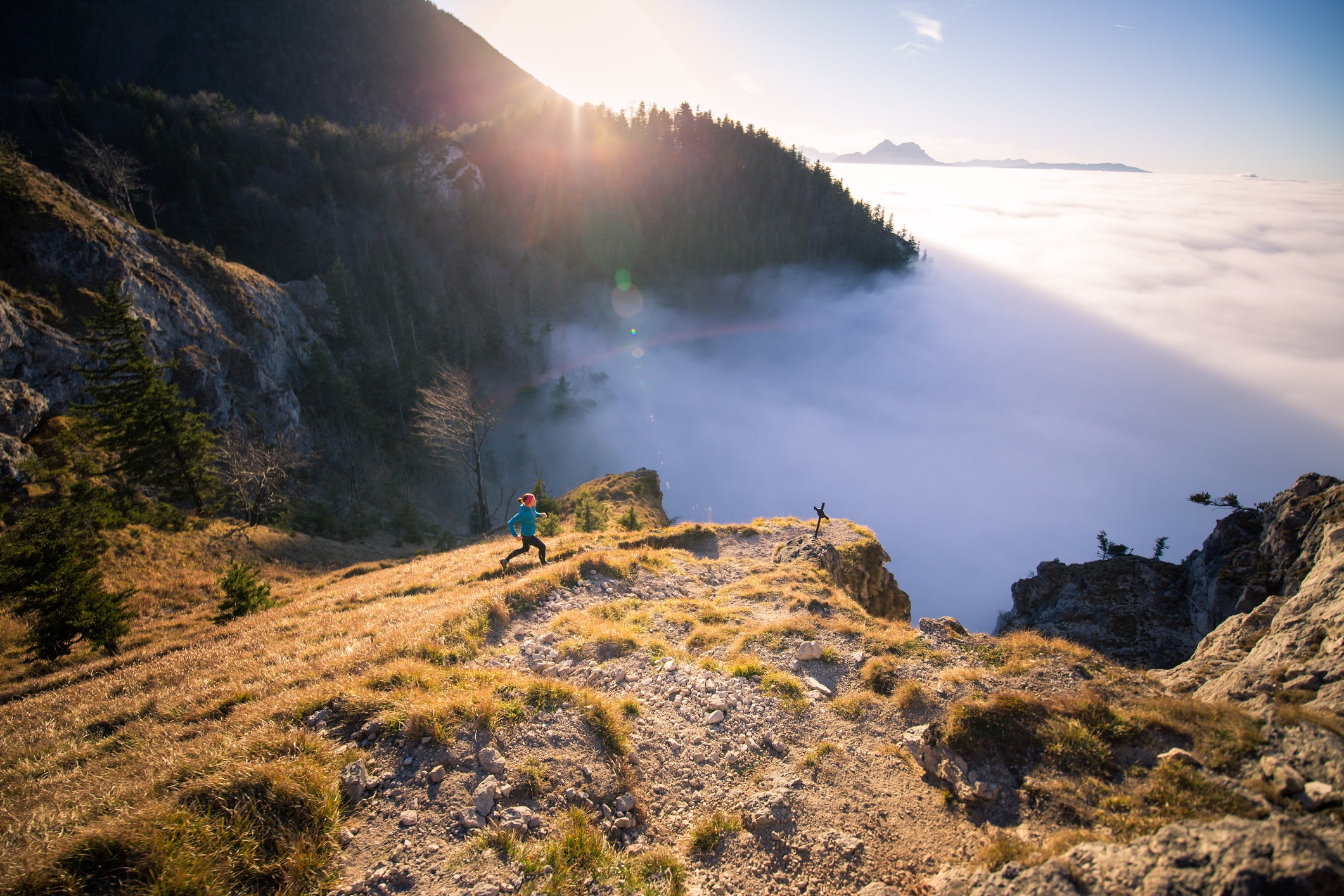3 Hard Running Workouts You Can Do Before Work

The main concern I’ve heard from trail runners looking to get faster is that they lack time. Most of us have a job (or are in school) and many have kids (or pets, which are basically kids that can be legally put in cages).
Running is yet another time stress, and it’s essential that training doesn’t take the place of what’s really important. I’m here to tell you that running doesn’t have to come at the expense of your job, your family or your free-range gerbil. In fact, realizing your trail-running potential can take as little as 30 to 60 minutes on hard workout days.
Before we get to the workouts, two reminders. First, limit yourself to one or two hard workouts a week, in addition to a long run, mixed with as much easy running as you can fit in. (Here’s how to structure your weekly training.) Second, keep doing your strength and injury-prevention work (which fortunately takes as little as five minutes).
RELATED: Back-to-Back Long Runs and Workouts: Next-Level Training, if Done Right
Without further ado, here are three types of hard running workouts you can do before work or during your lunch break:
1. Hills
10 minutes easy-run warm-up, 10 x 60-second hills, 10 minutes moderate
You’ve probably heard that “hills are speedwork in disguise.” I’d go even a step further, and say hills are also strength work, mental-toughness practice and intestinal-fortitude training. In other words, if you can’t do anything else, run hills! They are the ultimate all-in-one workout.
For hill workouts, find a trusty climb close to where you live or work so that you can repeat the workout often (any grade works). After warming up with enough easy running to break a sweat, run the first 60-second interval, note a landmark that approximates where you ended up, then jog down and run each subsequent interval to that spot without timing yourself.
The key is to run the intervals at a sustainable intensity, with the mindset that you could sustain the same effort for five times the distance. So if you are doing a 60 second hill, imagine you are running for five minutes. If you are doing a two-minute hill, 10 minutes. And if you are doing a 91-second hill … um, I went to a liberal-arts school, so I’ll leave the math to you.
RELATED: Tempo Runs 101
Then, finish with another 10 minutes at a moderate pace to practice running on fatigued legs.
Workout variations: 6 x 90-second hills; 4 x 3-minute hills; or 16 x 30-second hills
2. Track
15 minutes easy-run warm-up, 8 x 600-meter progression intervals (plus 200-meter recovery jogs), 5 minutes easy cool-down
If you run trails, chances are you don’t run on the track all that often, and for good reason. The track is where runners go to impersonate hamsters that are allergic to fun.
However, while the track can be mind-numbing and painful, it can also provide a great training stimulus. So how can you get the most out of an occasional trip to hamster wheel?
RELATED: 3 Running Form Tips To Make You Faster
I recommend progression intervals. After a slightly longer warm-up to get your body ready, break up each interval into two sections that you pace differently. For 600-meter intervals, for example, run the first 400 meters comfortably fast, and accelerate over the last 200 meters. Between each interval, jog very slowly for one-third to one-half of the interval’s distance.
A good rule of thumb is to consider the total distance of intervals you’ll be running (here, about 5K): run the first section of each interval a bit slower than you’d race over that distance, and the second section a bit faster. This method makes each interval mentally easier, while still working all of the physiological systems you need. As you get to the end of the workout, if you have extra gas in the tank accelerate even more at the end of the intervals.
Workout variations: 10 x 400 meters (broken up as 300/100); 5 x 1K (600/400 or 800/200); 12 x 300 meters (200/100)
RELATED: Try Steady State Running
3. Tempo
15 minutes easy-run warm-up, 20-minute tempo run at moderate effort, 10 minutes easy run with 4 x 30 seconds fast mixed in
“Tempo” running (here, meaning sustained, moderate effort) is essential for fast racing. All of the other workouts lay the groundwork to get better at this type of running, which will make you better in races across all distances and terrains. However, there are some tricks to the tempo that many people don’t know. And here, what you don’t know actually can hurt you.
On tempos, start with a normal warm-up and do a couple relaxed stride-outs to limber up. Then, from a standing start (as if you’re at the start line of a race), begin running moderately.
Don’t go out too hard, or you’ll make each tempo workout a race-level effort that risks injury. Instead, break the time up into three sections. On the first section, think smooth. On the second section, think relaxed. On the final section, think fast. A perfect tempo gets slightly faster as it goes, but is enjoyable until the very last push at the end (when you might even sprint for one minute if you’re feeling strong).
After the tempo, do a relaxed cool down and add in a few 30-second strides to get speed into your legs.
Workout variations: 2 x 10 minutes with 5-minute jog recovery in between; 1 x 30 minutes; 3 x 8 minutes
Do What You Can
If you are time-limited, never let perfect workouts be the enemy of good (or even OK) workouts. If you only have a few minutes on a workout day, mix in some unstructured intervals where you can’t fail—in other words, don’t try to hit particular splits but run based on effort and leave the watch at home.